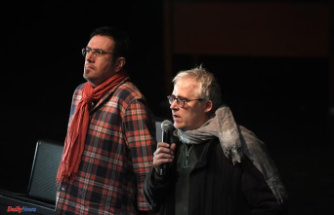The broadcast of a new documentary series by Ken Burns has been an event for over thirty years. In the company of Lynn Novick, the American producer, director, cinematographer and screenwriter manages to dissect the history of his country. Without leaving aside its gray areas. Whether it is the Civil War (1861-1865), jazz, Prohibition (1920-1933), baseball, the Second World War (1939-1945) or that of Vietnam ( 1955-1975), Burns succeeds each time in captivating a large audience by combining historical rigor and a sense of storytelling.
A master in the art of mixing previously unpublished archival documents (particularly photographic), interviews and trajectories of significant individual destinies, he plunges the viewer into the heart of history. Characteristic of his entire work: Burns takes his time. His documentaries last hours (from five for Prohibition to eighteen for the Vietnam War or for baseball, eleven for the Civil War, twelve for World War II), but we never notice the time passing .
This observation remains relevant for his new documentary series devoted to America's attitude towards the Holocaust. To be precise, these six episodes of 52 minutes each go beyond this framework to provide a more broader history of immigration in the United States, from the mid-19th century to the 1950s. Allowing, in passing, to shake up the myth of a cosmopolitan and welcoming nation.
The hypocrisies of the system
Between 1870 and 1924, the country welcomed 25 million foreign people, including 2 million Jews from Eastern Europe. But, at the beginning of the 1920s, the virulent anti-Semitism of some of the elites – led by industrialist Henry Ford – and the tension of a majority of the population in the face of immigration changed the situation.
The Johnson-Reed Act of May 26, 1924 marked a turning point by drastically limiting quotas, particularly those for Eastern Europe. For the first time, aspiring immigrants must obtain a visa from the American consulate in their country before boarding. By 1921, nearly 120,000 Jews from Eastern Europe had started a new life in America. Five years later, only 10,000 are allowed to do so.
Through the words of Franklin Delano Roosevelt (1882-1945), an internationalist who presided over a fundamentally isolationist country, we discover the complexity and hypocrisies of a system blocked by Congress. Through the openly pro-Nazi speeches of aviator Charles Lindbergh (1902-1974), one of the most popular American citizens, we discover another America: “A few Jews bring strength and character to a nation. If there are too many, it’s chaos. But we get too much of it! », he said in the early 1940s.
Between 1933 and 1945, America welcomed 225,000 Jews. Without restrictive laws further tightened in 1941 and polls largely hostile to immigration, she could have saved many more. However, from 1942, the American press reported the extermination of Jews in Europe. This will not be enough to move opinion. It was not until April 1945 and the liberation of several Nazi camps by American troops that public opinion declared itself in favor of temporarily welcoming more European refugees.












